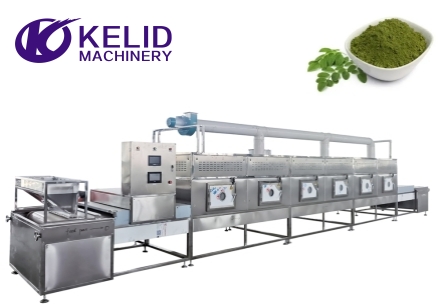1. Short Time and Fast Speed
Conventional thermal sterilization transfers heat from the surface of the food to the interior through heat conduction, convection or radiation. It often takes a long time to reach the sterilization temperature. Microwave sterilization is the direct interaction of microwave energy with food and microorganisms such as bacteria. The thermal effect and non-thermal effect work together to achieve rapid temperature rise and sterilization. The processing time is greatly shortened. The sterilization effect of various materials is generally 3-5 minutes.
2. Maintains Nutrients and Original Flavor
Microwave is sterilization through special thermal and non-thermal effects. Compared with conventional thermal sterilization, the required disinfection and sterilization effect can be obtained at a lower temperature and in a shorter time. Practice has shown that the general sterilization temperature can achieve the effect at 75-80℃. In addition, microwave sterilized food can retain more nutrients and flavors such as color, aroma, taste and shape.
3.Energy Saving
Conventional thermal sterilization often involves heat losses in the environment and equipment, while microwaves directly process food, so there is no additional heat energy loss. In addition, its conversion efficiency from electrical energy to microwave energy is 70-80%. In comparison, it can generally save 30-50% of electricity.
4.Both the surface and the interior are processed at the same time.
Conventional thermal sterilization starts from the surface of the material and then transfers to the interior through heat conduction.There is a temperature difference between the inside and outside. In order to maintain the flavor of the food and shorten the processing time, the temperature inside the food often does not reach sufficient temperature, which affects the sterilization effect. Because microwaves have a penetrating effect, when the food is processed as a whole, both the surface and the inside are affected at the same time, so the disinfection and sterilization are uniform and thorough.
5. Easy to control
For microwave food sterilization treatment, this can be used immediately without the thermal inertia of conventional thermal sterilization. The operation is flexible and convenient. The microwave power can be adjusted and the transmission frequency can also be adjusted according to customer requirements for easy control.


